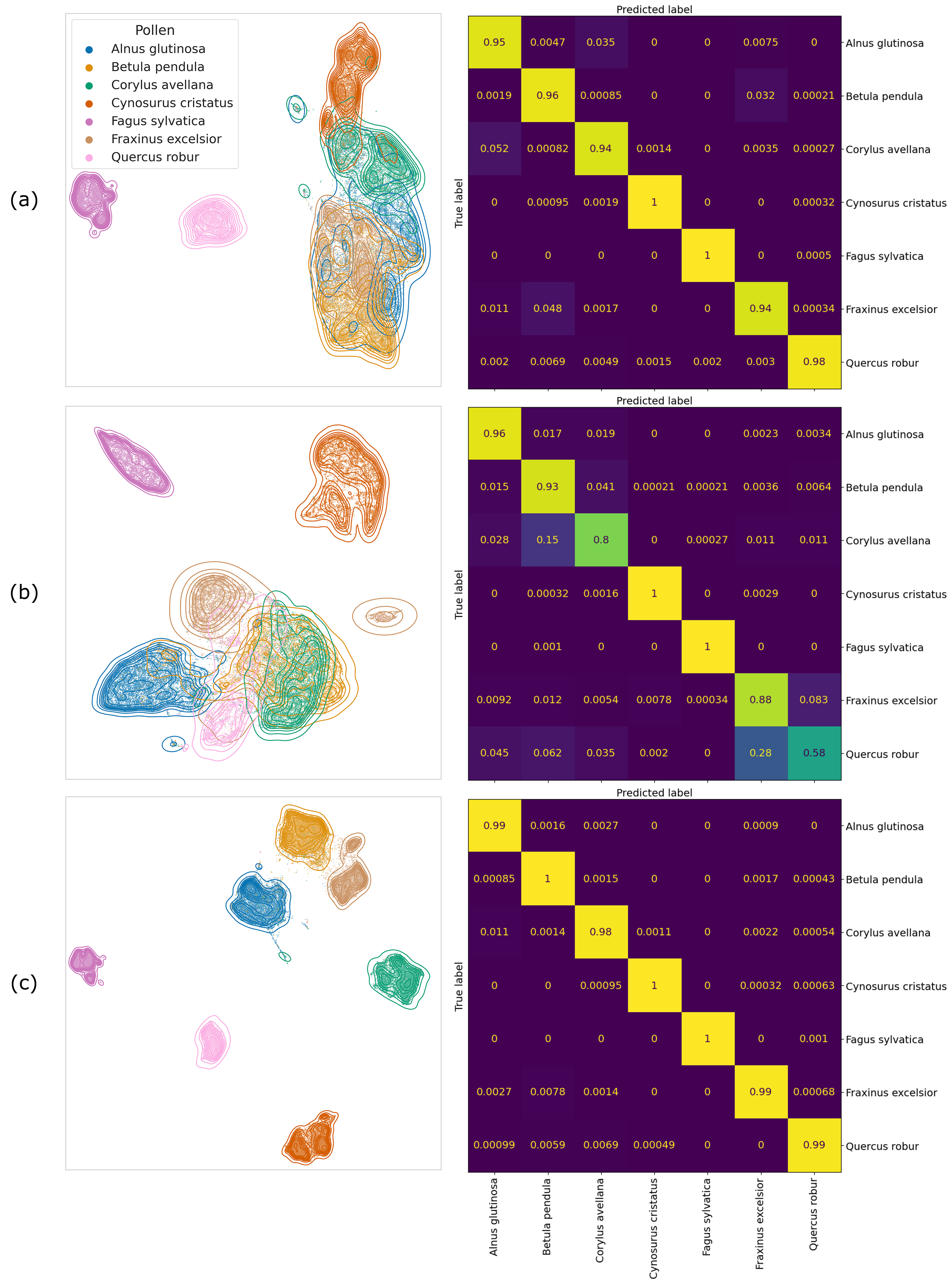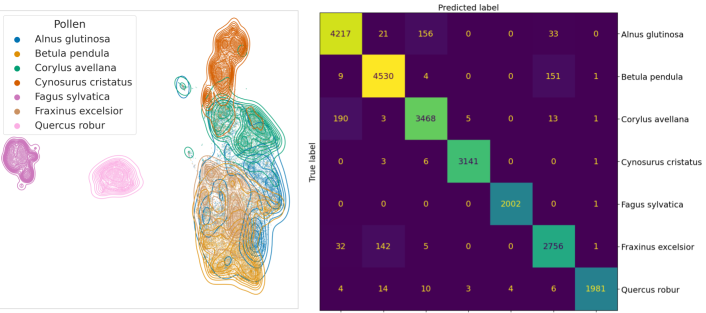- January 31, 2024
- Yanick Zeder
Pollen Monitoring: Harnessing Fluorescence Spectroscopy for Precision Identification
At Swisens, innovation in aerosol particle measurement technology is our daily pursuit. Our SwisensPoleno Jupiter, is a testament to our operational automatic bioaerosol monitoring efforts. Primarily, it’s been employing holographic imaging to record and identify different pollen taxa among single aerosol particles.
A recent collaborative published research effort unveiled how melding fluorescence spectroscopy with holographic imaging can further improve the classification performance of our system. Previously, classification leaned solely on holography, with fluorescence data being recorded but not utilized for classification. Now, with the integration of fluorescence spectra, we've seen a bump in the overall classification performance. This is mainly accounted for by the bump in identification performance for Alnus glutinosa, Betula pendula, Corylus avellana and Fraxinus excelsior.
Let’s dig a bit into the why and how
Fluorescence provides insight into the chemical properties of particles, complementing the morphological insight obtained from holography. This dual-data approach helps identify certain pollen classes that were hard to identify using only holography. Moreover, this methodology could potentially enhance the classification of spores and other airborne particles, broadening the spectrum of bioaerosol identification.
Below is a figure from the publication illustrating the impact of this combination in terms of discrimination of the seven pollen taxa:

On the left, we see a visual representation of how event features are grouped using morphology and fluorescence (FL) data. On the right, confusion matrices show the accuracy of classification models tested – (a) using only holography, (b) using only fluorescence, and (c) combining both. It’s clear that the combined approach enhances identification accuracy.
The impact of this enhancement goes beyond just our system. It paves the way for a more precise identification of pollen taxa in real-time, especially those triggering respiratory allergies, and potentially, a better classification of spores. Moreover, it contributes to a better understanding and monitoring of atmospheric bioaerosols, crucial for both climate studies and public health.
We’re enthused about the journey of discovery and the positive impact these findings will most likely have on real-time pollen identification. We invite you to delve into the full publication on EGUsphere for more technical details.
Are you interested in collaborating with us? Let's meet and talk through the possibilites.
Erb, S., Graf, E., Zeder, Y., Lionetti, S., Berne, A., Clot, B., Lieberherr, G., Tummon, F., Wullschleger, P., and Crouzy, B.: Real-Time Pollen Identification using Holographic Imaging and Fluorescence Measurement, EGUsphere, https://amt.copernicus.org/articles/17/441/2024/
Yanick Zeder
Software Engineer & Machine Learning Specialist


